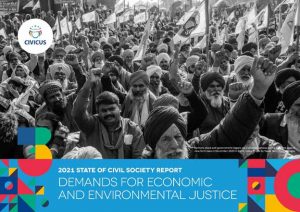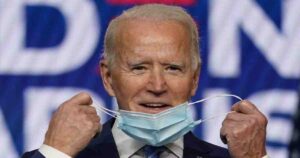by Philippe Pochet on 30th April 2020 @philippepochet
What kind of Europe will take shape after the coronavirus crisis? Four scenarios, widely varying in their social and ecological consequences, are possible. It’s now clear the Covid-19 pandemic will have major, long-term consequences. In the European Union, the very foundations of European integration are being questioned.
The EU is defined by its ‘pillars’: the single market and free movement, the euro and the Stability and Growth Pact, and competition and state-aid law. These three pillars are being shaken by the pandemic and they are sure to be at the centre of debates on the future of Europe.
National borders
As regards the free movement of people, the closing once more of national borders has been a highly symbolic trend, demonstrating that ‘other’ Europeans are still considered as potentially dangerous, disease-carrying foreigners. This poses very delicate questions. When and under what conditions (health, economic, political) will a reopening be considered—without engendering too much risk? And at what scale—the Schengen area or groups of countries with similar risk levels (Benelux, the Baltic states, the Iberian peninsula), as the European Commission seems to be suggesting?
In the absence of a common approach to managing the health crisis, most likely will be the persistence of more or less tight internal borders for a long time. As for the EU’s external borders, the example of China suggests strict ‘cocooning’ of the national territory vis-à-vis the outside world, having overcome the internal health crisis, is set to be the norm.
In the context of a monetary union devoid of solidarity mechanisms and without supranational political governance, the rules of the Stability and Growth Pact have been (temporarily) suspended—in sharp contrast to the eurozone crisis. But, here again, what will happen after? There are different ways of financing budget deficits and state debts, which are bound to explode. The consequences of these seemingly technical choices vary greatly in terms of their fiscal and, manifestly, social impact. Whether we resort to ‘helicopter’ money or ‘coronabonds’ or stick to the European Stability Mechanism—how the recovery is financed and what type of recovery it is—will greatly affect the future.
Moreover, are the institutional innovations being adopted temporary or longer-term—is the SURE initiative (supporting short-time work arrangements) the beginning of an EU unemployment-reinsurance system? And while the previous crisis did not allow of any progress towards the supranational governance of the currency, this one will be the last opportunity to do so.
Finally, the relaxation of state-aid restrictions and the rescue of companies in distress will reconfigure what is considered possible and legitimate. At stake is the legitimacy of the state to intervene in economic life. The effects of this crisis on the real economy will last for a long time, meaning that Europe will not soon get back to normal.
This, in turn, allows different choices from before. Will the role of the state in the economy, whether direct or indirect, be focused on ‘rescuing’ traditional sectors (air transport, oil or vehicle production) or will it be to push us towards an ecological transformation?
Different foundations
The post-crisis EU—assuming it survives—could have very different foundations if the questioning of the three pillars continues. But in which global environment is this set to happen? There are four possible scenarios.
The first (contrary to what I have written before) is a possible return to neoliberal orthodoxy—a bit like the previous crisis (2008-13), when Europe reverted even more radically to neoliberal fundamentals after a more or less green recovery in 2009. This was what eminent researchers have called the strange non-death of neoliberalism. This scenario is unlikely this time but not to be ruled out.
True, it’s difficult to see austerity being applied to the public sector in one or two years’ time. Yet the reactions of certain national employer organisations, growing tensions within certain states (and the conflict in the United States between governors and the president) and the bailouts of industrial and service sectors without real social or environmental conditions point in this direction.
The second scenario is the Chinese path, under which we move towards a more authoritarian state monitoring a country’s population via new means based on artificial intelligence, with restrictions put on sometimes quite fundamental freedoms in exchange for a feeling of protection (purportedly of the country’s territory). The fact that this health crisis could be recurrent opens up possibilities for more authoritarian governments, such as in Hungary and Poland, to assert themselves as the guarantors of their citizens’ safety and security.
This scenario goes hand-in-hand with global fragmentation and a more or less radical ‘deglobalisation’. Here again, the example of the US under Donald Trump, above all with the possibility of a second term, is telling. The relevant unit becomes the national territory—with social control ramped up with the help of 5G networks.
Growth at any price
The third scenario is a return to growth at any price, with unfettered catch-up consumption without any consideration for the environment. Reminiscent of the Belle Époque, this would be nothing less than an end-of-the-world party. While it would obviously have a positive impact on conventional economic indicators (such as a gross domestic product) and would reduce bankruptcies and unemployment in the short and medium-term, it would have major long-term consequences.
The calls of certain governments, such as in the Czech Republic, and sectoral actors to forget the European Green Deal underline the strength of this scenario. And should consumption not really pick up again, calls for recovery would give new impetus to demands for less account to be taken of environmental concerns and for greater labour-market ‘flexibility’ at the expense of workers. Seen this way, the third scenario could greatly resemble the first.
The final scenario involves accelerating the ecological transition and rapidly rethinking our growth model, with a return to public services, common goods and solidarity at the heart of the economy and social affairs. We are seeing the seeds of this, with several governments and civil-society players supporting the Green Deal and certain cities, such as Paris and Brussels, showing the way to a faster transition—albeit one very difficult to complete amid high unemployment and economic crisis.
Two factors are set to have a decisive influence. The first is the partial relocation of production chains and certain environmental protectionism, which in extremis could have a lot in common with the second, nationalistic scenario. The key question would be whether co-operative protectionism (aimed at achieving the same goal) rather than antagonistic protectionism (winning against others) gained the upper hand.
The second and key factor is the reduction of working time. It constitutes a dividing line between the neoliberal restoration and this recovery-at-all-costs scenario and comprises a strategic tipping point. In my view, it is strategically the most important aspect of structuring upcoming debates.
These scenarios are not mutually exclusive and can be combined and developed in parallel in different regions of the world, depending on the relevant balance of power. It might only take a little to switch from one to another. The strategy of collective actors will, therefore, play a key role—with consequences for the way the architectural pillars of the EU are transformed.
(Philippe Pochet is general director of the European Trade Union Institute (ETUI).




